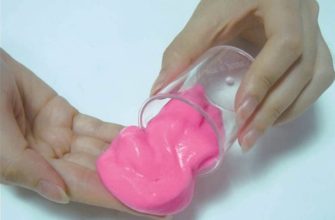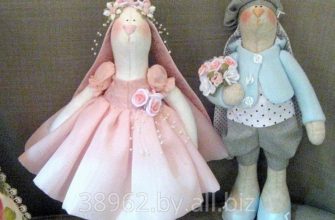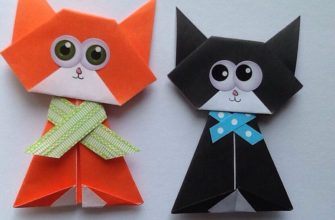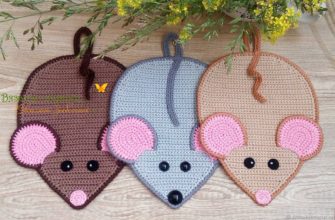Knitted toys are very popular among needlewomen. The question of how to crochet a bunny will be answered in this article, in which the reader will be offered a choice of several patterns and a detailed description of each to create their own unique crochet bunny.
- Crochet toys: specifics of creating toys
- Materials and tools needed for the job
- What is the difference between knitting a hare from plush yarn and regular yarn
- Knitting a sleeping hare
- Two turquoise legs
- Torso
- Head
- Face design
- Two ears
- Two handles
- Tail
- How to knit an amigurumi bunny
- Paws
- Torso
- Ears
- Head
- Knitting pattern of little bunnies
- Head
- Ears
- Legs
- Handles
- Corpuscle
- Knitting pattern of a hare with long ears
- Lower paws
- Body with head
- Nose
Crochet toys: specifics of creating toys

To make a beautiful toy, the needlewoman will need simple templates and basic crochet skills. All the parts are ovals that are crocheted in a spiral. The bunny must have a body, a head with a muzzle (eyes, nose), ears, two lower and two upper limbs, a tail.
The size and colors of the bunnies are chosen at will. Usually, the main shade and one or two secondary ones are used. You can also add small details, such as clothes with buttons, slippers, a headdress, etc. When all the parts are made in sequence, they are filled and sewn together, and the tails of the threads are hidden inside.

The following abbreviations are often used in MK:
- air loops (AL);
- column (st);
- single crochet (sc/sc/st/sc/sc);
- half double crochet (HDC);
- double crochet (dc);
- slip stitch (ss);
- reduce (kill);
- add (add);
- amigurumi ring (k.a.).
Please note! An amigurumi ring is necessary for knitting round things.
This is an important element when creating a bunny from plush yarn using a crochet hook, as it allows the future toy to hold its shape and avoid the appearance of holes.
It is better to stock up on a proven pattern before crocheting a bunny. Below are four options for creating a toy.
Materials and tools needed for the job
To make a crochet bunny you need to prepare the following:
- Yarn. More details about yarn specifics below.
- Hook No. 2 or No. 4-5 – depending on the thickness of the yarn.
- Filler. The most affordable option is cotton wool. However, it is better to buy a higher quality material (synthetic padding, synthetic fluff or holofiber).
- Scissors.
- Sewing kit (needle and strong thread). Neutral colors (beige, gray, black) or those that match the main color scheme.
- Additional (non-knitted) details (eyes, nose, beads).
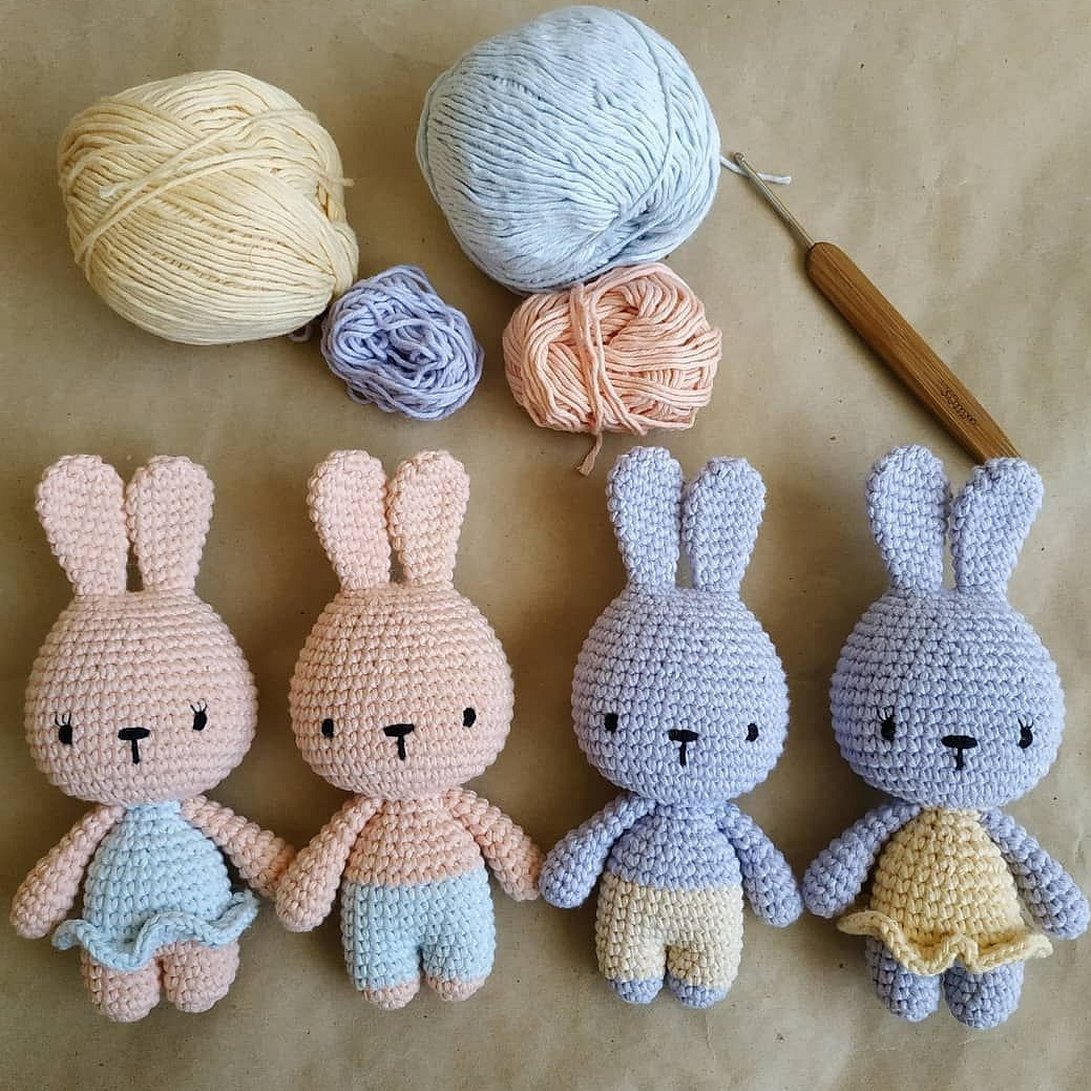
What is the difference between knitting a hare from plush yarn and regular yarn
Not all types of yarn can be used for knitted toys. It is desirable that the threads consist of 50-100% cotton. A combination of cotton with viscose is allowed, as well as mercerized cotton thread. Acrylic can be used. Wool is categorically unsuitable.

The so-called plush yarn is actively used. It is distinguished by its increased softness, pleasant to the touch. Its colors are very rainbow and bright. Among the manufacturers, we can note Alize Bella, Schachenmayr Bravo, Himalaya Dolphin Baby, Barka Menta.
Attention! It is important to remember that a hook selected for regular yarn is not suitable for plush yarn, since it is thicker and more voluminous, and requires a larger tool.
For the same reason, crafts made from it turn out large.
Knitting a sleeping hare
To knit a sleuth, you can use white or milky main color, turquoise, white and pink as additional colors. Black and brown shades are used to decorate the face.
Two turquoise legs
1st row: 6 sc in ca.
2nd row: 6 pr-t.
3rd row: 1 sc, inc – 6 times.
4th row: 18 sc.
Row 5: 2 dec, 6 sc, 2 inc, 6 sc.
Row 6: 18 sc.
Row 7: 2 dec, 6 sc, 2 inc, 6 sc.
Row 8: 18 sc.
Row 9: 2 dec, 6 sc, 2 inc, 6 sc.
Row 10: 18 sc.
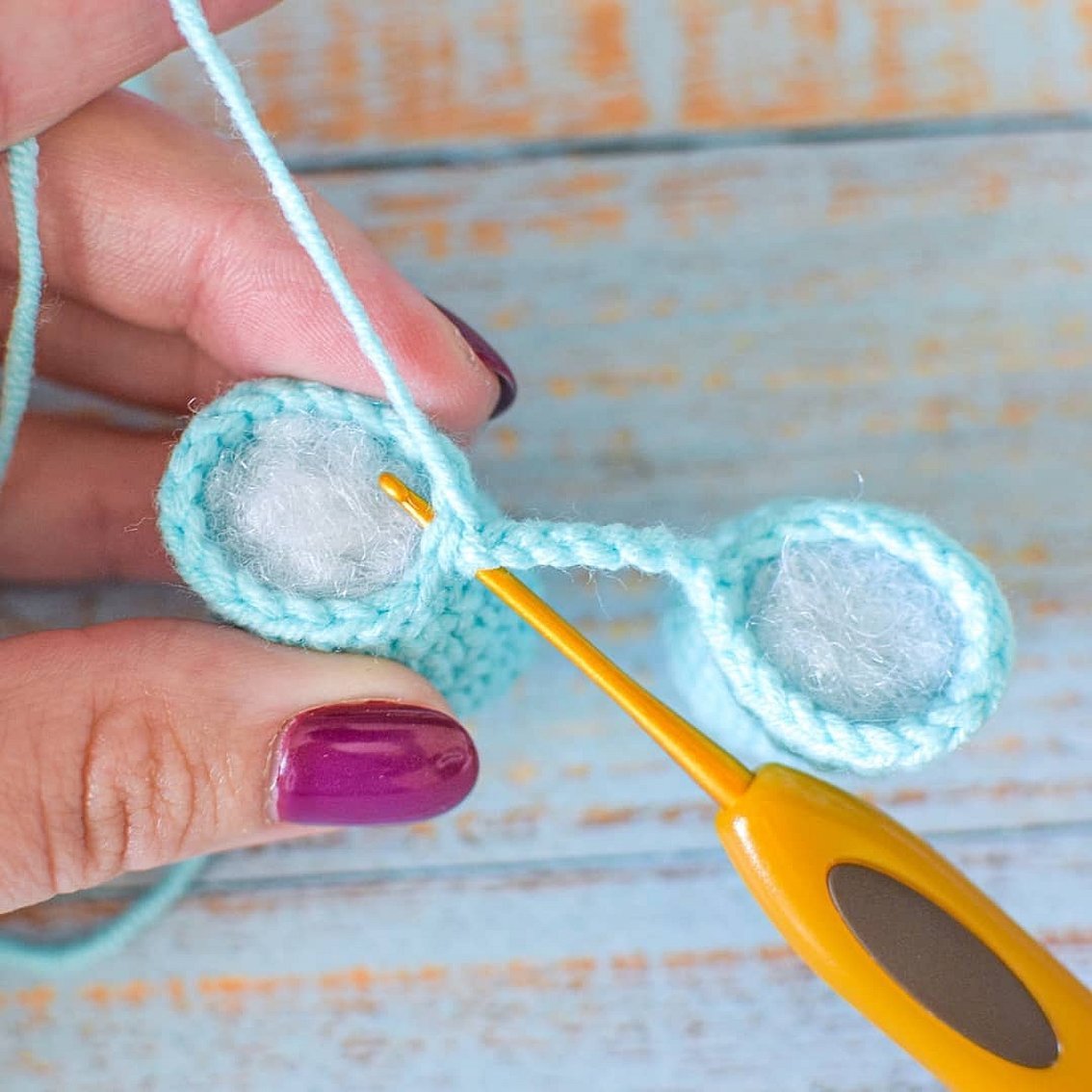
Torso
From the second leg there are 6 ch and further along the rows.
1st row: 18 sc along the first leg, 6 sc along one side of the chain, 18 sc along the second leg, 6 sc along the other side of the chain.
2nd row: 48 sc.
3rd row: 7 sc, repeat 6 times.
4th row: 54 sc.
Row 5: 4 sc, inc, 8 sc, inc – 5 times, 4 sc.
Row 6-25: 60 sc.⠀⠀
Head
Using the main color yarn, cast on 11 ch + 1 ch for lifting.
1 row: 10 sc, 3 sc in the last loop, then 9 sc on the back side, inc.
2nd row: inc, 9 sc, 3 inc, 9 sc, 2 inc.
3rd row: 1 sc, inc, 9 sc, 1 sc, inc – 3 times each, 9 sc, 1 sc, inc – 2 times each.
4th row: 2 sc, inc, 9 sc, (2 sc, inc – 3 times each, 9 sc, 2 sc, inc – 2 times each.
5th row: 3 sc, inc, 9 sc, 3 sc, inc – 3 times each, 9 sc, 3 sc, inc – 2 times each.
Row 6: 48 sc.
Row 7: 4 sc, inc, 9 sc, 4 sc, inc – 3 times each, 9 sc, 4 sc, inc – 2 times each.
Row 8: 5 sc, inc, 9 sc, 5 sc, inc – 3 times each, 9 sc, 5 sc, inc – 3 times each.
Rows 9-18: 60 sc.
Attention! Knitting with turquoise thread begins.
Row 19: 60 sc behind the back half loop.
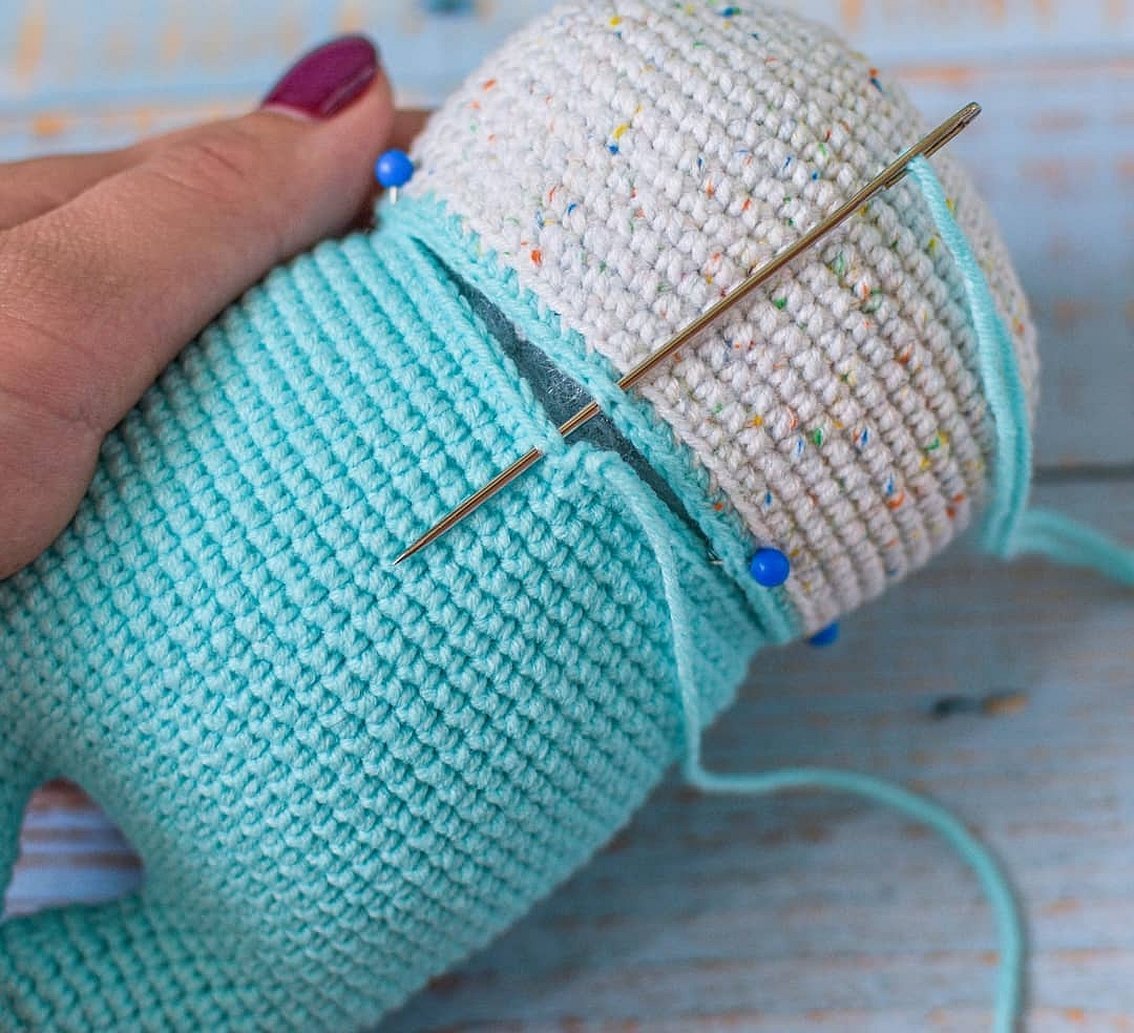
Face design
The nose is embroidered with brown thread, and the eyes with black thread. You can make expressive cheeks, almost like those of the Tilda doll: in the k.a., dial 2 ch for lifting, 10 hdc, sl st in the 2nd ch for lifting.
The crochet hare has a collar on the pajamas. For it, attach a white thread to the first free half-loop of the 18th row of the head.
1 row: 1 ch for lifting, 60 sc, sl st.
2nd row: 1 ch for lifting, 1 sc; 1 dc, 1 sc – in 1 loop, sl-st; 1 sc, 1 dc, 1 sc – in 1 loop, sl-st, alternate to the end.
Two ears
Knit two pieces with the main color thread.
1 row: 6 sc in k.a.
2nd row: 6 pr-t.
Row 3: 1 sc, repeat 6 times.
4th row: 18 sc.
5th row: 1 sc, inc; 2 sc, inc – 5 times, 1 sc.
Rows 6-14: 24 sc.
Row 15: 5 sc, dec, 10 sc, dec, 5 sc.
Row 16: 22 sc.
Row 17: 9 sc, dec – 2 times.
Row 18: 20 sc.
Row 19: 4 sc, dec, 8 sc, dec, 4 sc.
Row 20: 18 sc.
The ear is folded, 9 sc are knitted.
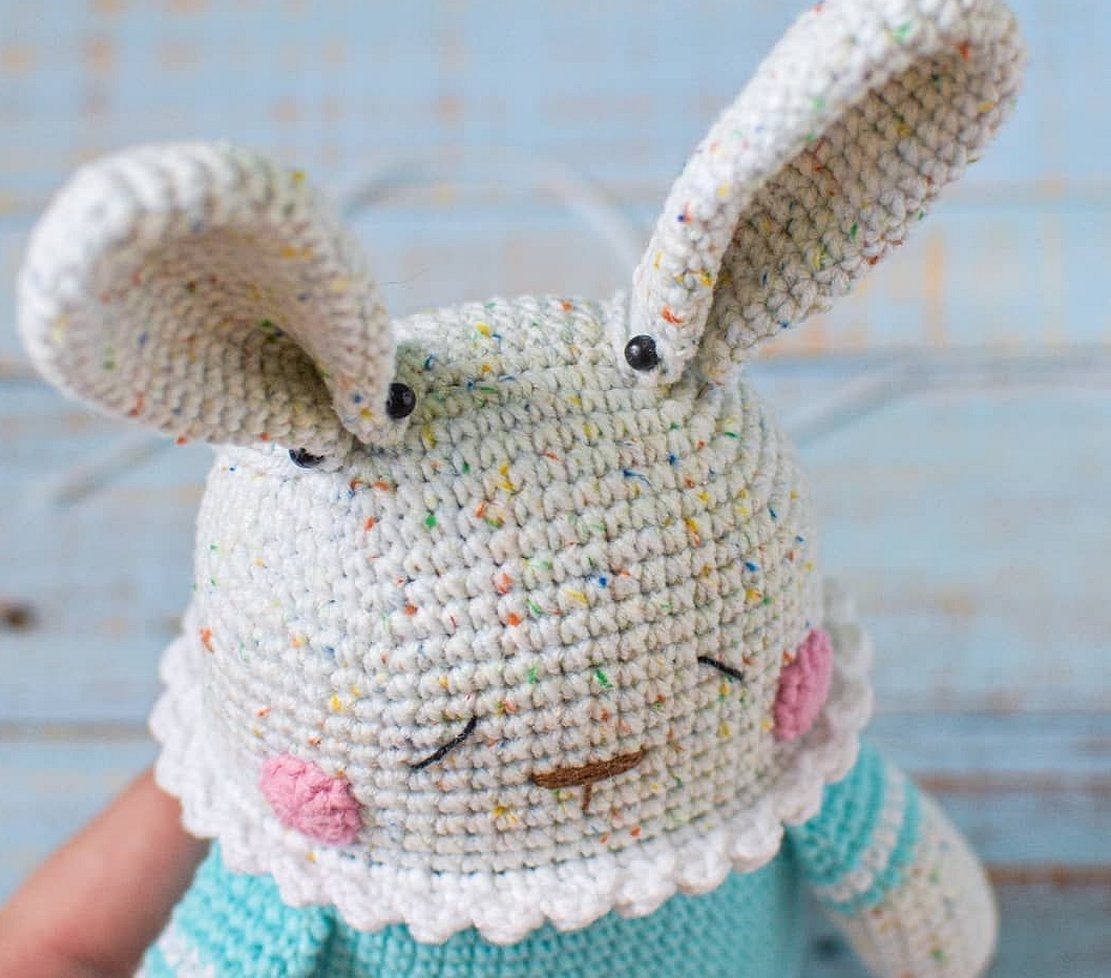
Two handles
First comes the main yarn.
1 row: 6 sc in k.a.
2nd row: 6 pr-t.
3rd row: 3 sc, repeat 3 times.
Rows 4-10: 15 sc.
Turquoise – 11th row: 15 sc.
White – 12th row: 15 sc.
Turquoise – 13th row: 15 sc.
Row 14: 3 sc, dec – 3 times.
Row 15: 12 sc.
At the end, 1 sc is made, the edges are connected, then 6 sc.
Tail
It is knitted in the main color:
1st row: 6 sc in ca..
2nd row: 6 pr-t.
3rd row: 3 sc, inc – 3 times.
Row 4: 3 sc, dec – 3 times.
For a sleeping bunny, it would be appropriate to make a nightgown with a hood.
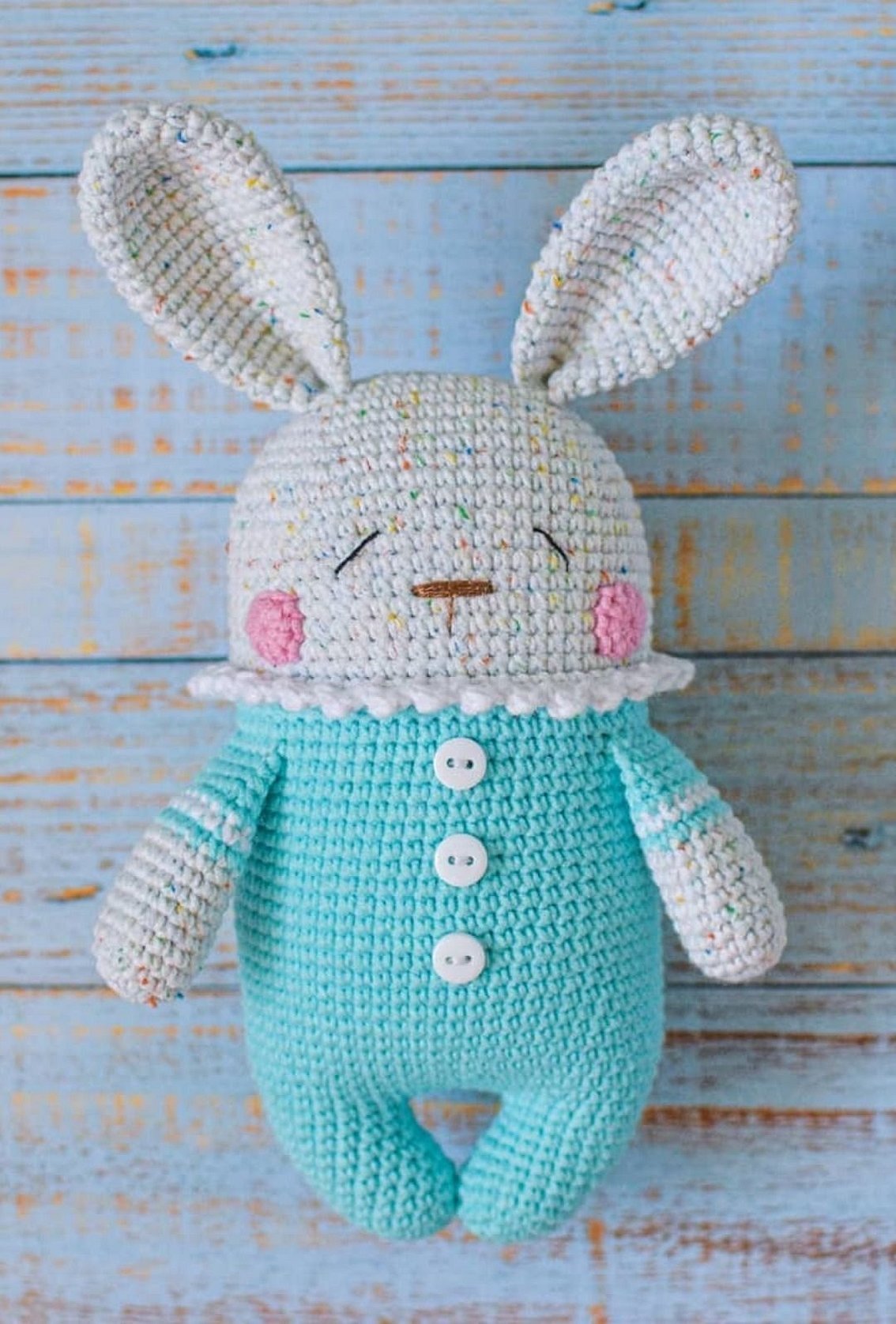
Important! It is necessary to strictly adhere to the pattern - this is especially important for beginner knitters.
If there is a problem somewhere in the knitting, it is better to unravel the fabric and start over.
How to knit an amigurumi bunny
Amigurumi is translated from Japanese as "knitted". The pattern based on it is easy and quick to create.
Paws
Start of knitting – paws:
1st row: 1 ch + 2 ch for lifting, 5 sl st in sl st.
2nd row: knit each column twice.
3-6th row: 10 sts/bn.
7th row: 1 sl st, dec.
8-11th row: 7 sts/bn.
Torso
The torso starts with the legs:
1st: 6 tbsp.
2nd: pr-t.
3-7th: 1 dc in each loop.
Beginning of knitting the body:
1st-9th: 1 sc around.
10th row: 2 dc, dec 1 time.
Row 11: sc in a circle.
12-13th row: the upper legs are tied.
Row 14: sc in a circle.
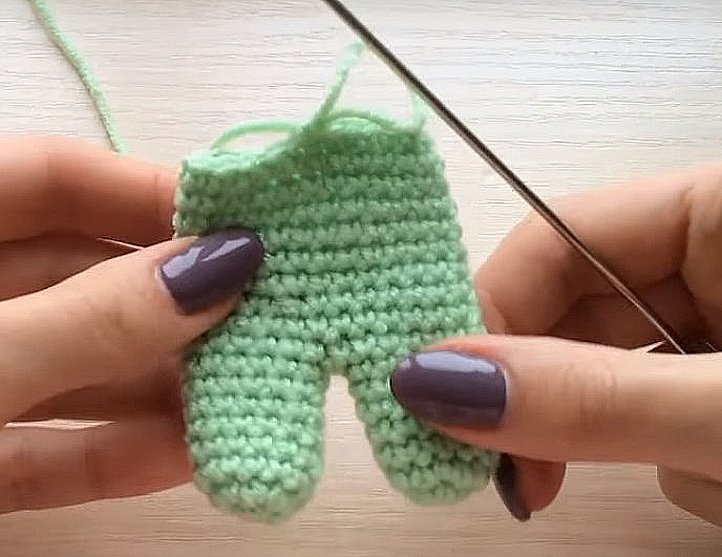
Ears
Knitting ears:
1st: 6 st/bn in k.a.
2nd: pr-t - each table/bn 2 times.
3rd–14th: 1 dc in each st.
The ear is folded and sewn up with thread.
Head
Knitting the bunny head:
1st: 6 st/bn in k.a.
2nd: pr-t - each table/bn 2 times.
3rd: 1 loop, right.
4th: 2 tables/bn, pr-t.
5th: pr-t in every 4th st.
6th: pr-t in every 5th st.
7th: pr-t in every 6th st.
8th: pr-t in every 7th st.
9-13th: 1 table/bn in 1 loop.
14th row: 5 st/bn, dec.
15th row: 4 st/bn, dec..
Row 16: 3 sl st, dec.
Row 17: 2 sl st, dec.
Rows 18-19: sc in a circle, sl st.
The toy needs to be assembled.
Bead eyes are sewn on, eyebrows, a nose and a mouth are also embroidered.
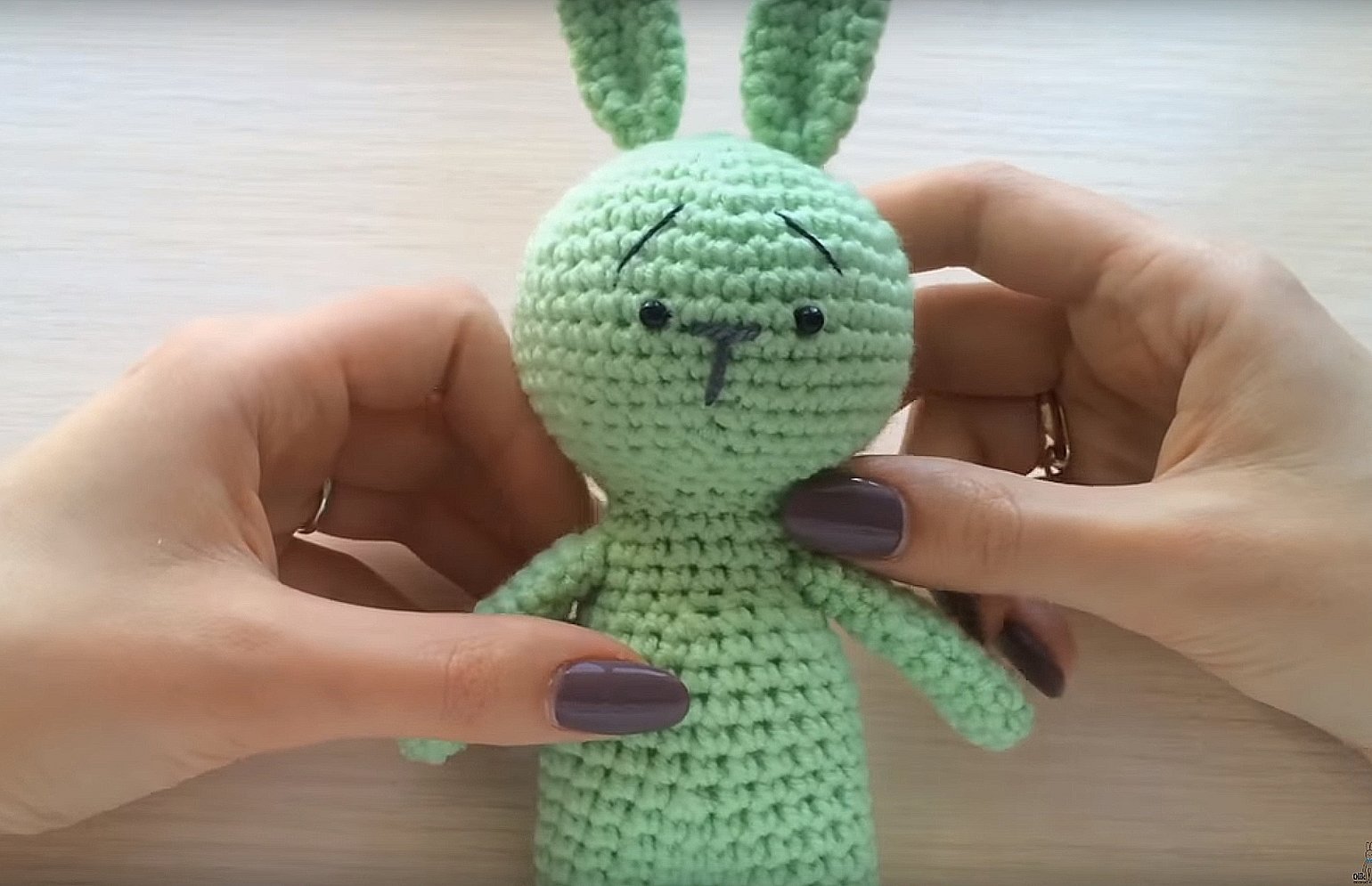
Knitting pattern of little bunnies
The next MK is making a classic bunny, but in a smaller version.
Attention! The little bunnies look very cute and are much quicker to make than regular sized toys.
Head
1st: 2 ch, 6 sc.
2nd: 6 pr-t.
3rd: 1 sc, inc – 6 times.
4th: 18 sc.
5th: 2 sc, inc – 6 times.
6th: 24 sc.
7th: 3 sc, inc – 6 times.
8-9th: 30 sc.
10th: 3 sc, dec – 6 times.
11th: 2 sc, dec – 6 times.
12th: 1 sc, 6 times.
Ears
The ears are made like this:
1st: 16 ch
2nd: from the second loop 5 sc, 5 hdc, 4 dc, 5 dc, turn and knit on the other side of the chain: 4 dc, 5 hdc and 5 sc.
Legs
The legs are performed as follows:
1st: 2 ch, in the second loop 6 sc.
2nd: 6 pr-t.
3-4th: 12 sc.
5th: 1 sc, dec – 4 times.
6-8th: 8 sc.
Fold in half, 1 ch, 4 sc across both edges of the piece.
Handles
The hands are knitted like this:
1st: 2 ch, in the second loop from the hook 6 sc (6).
2nd: 1 sc, repeat 3 times.
3-4th: 9 sc.
5th: 1 sc, dec – 3 times.
6-8th: 6 sc.
Fold in half, 1 ch, 3 sc through two sides of the element.
Corpuscle
The body is made like this:
1st: 2 ch, in the second loop 6 sc.
2nd: 6 pr-t.
3rd: 1 sc, inc – 6 times.
4th: 2 sc, inc – 6 times.
5-7th: 24 sc.
8th: 2 sc, dec – 6 times.
9th: 18 sc.
10th: 1 sc, dec – 6 times.
11-12th: 12 sc.
Finally, the product is assembled step by step.
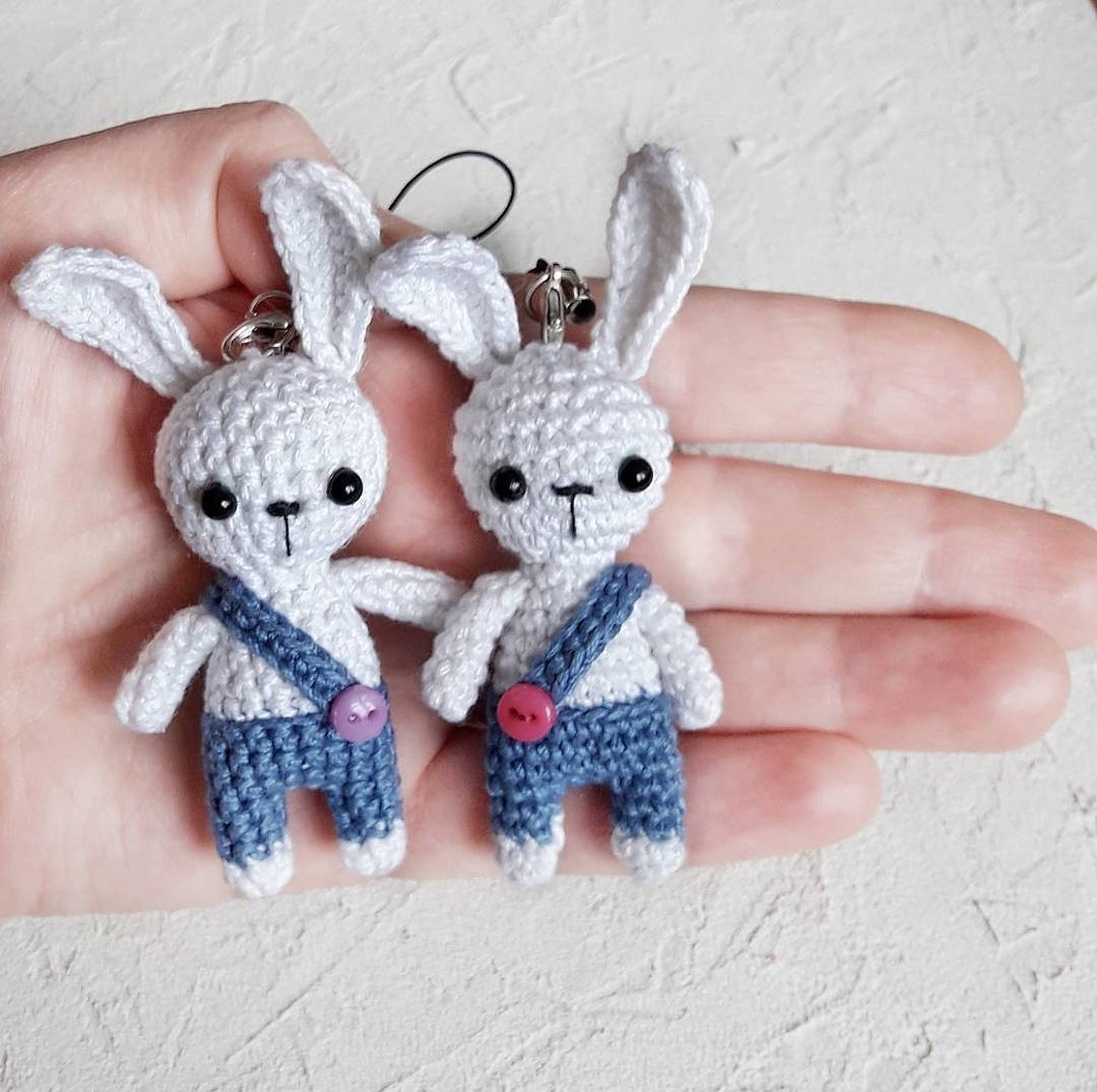
Knitting pattern of a hare with long ears
The master class below is dedicated to crocheting a large hare with long ears.
Upper paws
Upper paws (2 parts):
1st row: 4 ch
2: from the second loop 2 sc, 3 sc in the last loop, turn the product: 1 sc, inc.
3: inc, 1 sc, inc 3 times, 1 sc, inc 2 times.
4: 1 sc, inc, 3 sc, inc, 1 sc, inc – 2 times each, 3 sc, inc.
5-9: 19 st bn.
10: 7 sc, dec, 1 sc, dec, 7 sc.
11: 4 sc, sc 2, 1 sc, sc 2, 4 sc.
12-21: 13 st bn.
22: 2 st bn.
Lower paws
Lower legs (2 parts):
1st row: 7 ch
2: from the second loop 5 sc, 3 dc in the last loop, knitting turns: 4 dc, inc.
3: inc, 4 sc, inc 3, 4 sc, inc 2 times.
4: 1 sc, inc, 5 sc, inc, 3 sc, inc, 5 sc, inc, 2 sc.
5: 2 sc, inc, 5 sc, inc – 3 times, 3 sc.
6: 1 sc, inc - 2 times, 5 sc, inc, 1 sc, inc, 3 sc, inc, 1 sc, inc, 5 sc, inc, 1 sc, inc, 2 sc.
7: Behind the back wall of the loop 36 sc.
8-9: 36 st bn.
10: 9 sc, dec, 1 sc, dec – 5 times, 8 sc, dec.
11: 8 sc, dec 2 times, 3 sc, dec 2 times, 8 sc, dec.
12: 8 sc, dec 4 times, 8 sc.
13:6 sc, dec, 4 sc, dec, 6 sc.
14: 7 sc, dec 2 times, 7 sc.
15-24: 16 st bn.
25: 2 st bn.
Fold the edges together.
Attention! For each loop on both sides, knit a single crochet.
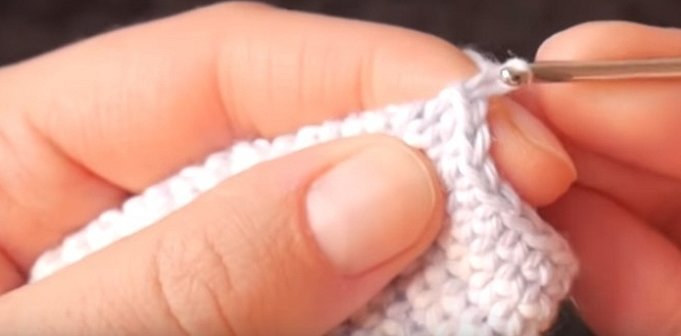
Body with head
The body and head are made together:
1st: 6 st/bn in k.a.
2nd: repeat 6 times.
3rd: 1 table/bn, repeat 6 times.
4th: 2 tbsp, repeat 6 times.
5th: 3 st/bn, repeat 6 times.
6th: 4 st/bn, repeat 6 times.
7th: 36 tables/bn.
8th: 5 st/bn, repeat 6 times.
9th: 6 st/bn, repeat 6 times.
10-16th: 48 tables/bn.
17th: 6 tables/bn, kill – 6 times.
18th: 5 tables/bn, kill – 6 times.
19th: 3 sc, dec 6 times, 21 sc.
20-23rd: 30 tables/bn.
24th: 3 tables/bn, kill – 6 times.
25th: 24 sts/bn (24).
26th: kill 12 times.
27th: repeat 12 times (head).
28th: 1 table/bn, repeat 12 times.
29th: 5 tables/bn, repeat – 6 times.
30th: 6 tables/bn, repeat – 6 times.
31st: 7 tables/bn, repeat – 6 times.
32nd: 8 st/bn, pr-t – 6 times.
33-37th: 60 sc.
38th: 8 sc, dec – 6 times.
39th: 7 sc, dec – 6 times.
40th: 6 sc, dec – 6 times.
41st: 42 sc.
42nd: 5 sc, dec – 6 times.
43rd: 4 sc, dec – 6 times.
44th: 30 sc.
45th: 3 sc, dec – 6 times.
46th: 24 sc.
47th: 1 sc, dec – 6 times.
48th: kill 8.
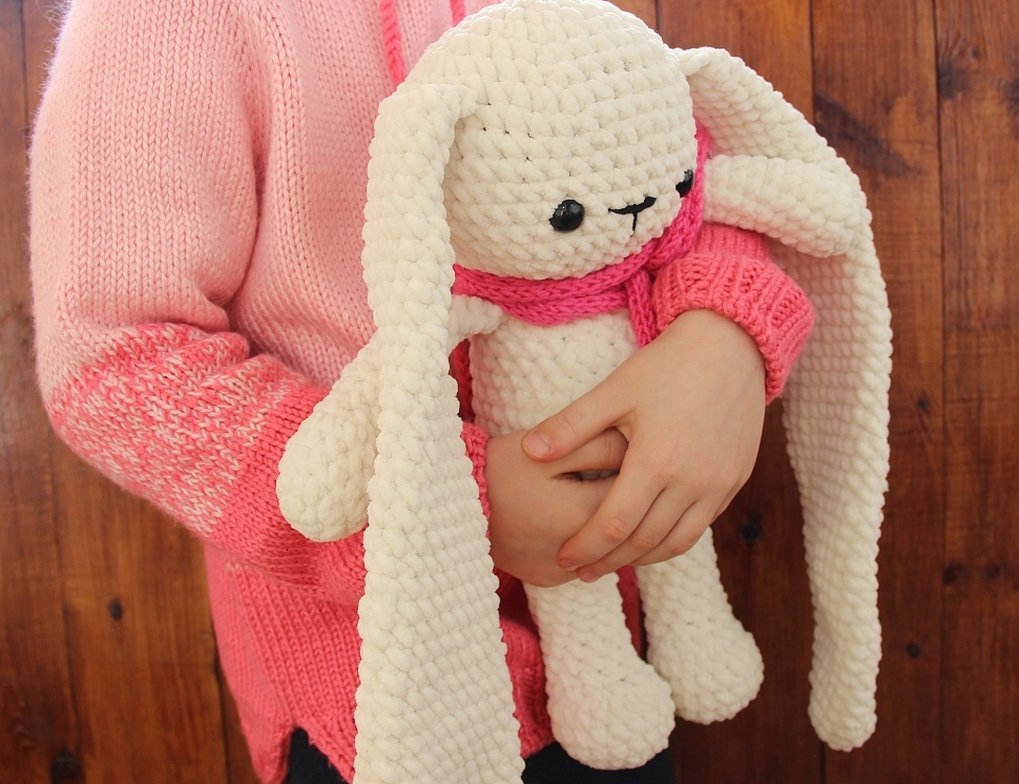
Nose
The spout is made as follows:
1st: 6 tables/bnv k.a.
2nd: pr-t – 6 times
3rd: 1 table/bn, repeat – 6 times
4th: 2 tbsp, repeat 6 times
Eyes are made on the head, eyebrows are embroidered and a nose is added.
Ears (2 parts):
1st: 6 st/bn in k.a.
2nd: repeat 6 times.
3rd: 1 table/bn, repeat – 6 times.
4th: 2 tbsp, repeat 6 times.
5th: 3 st/bn, repeat 6 times.
6th: 4 st/bn, repeat 6 times.
7th: 5 st/bn, repeat 6 times.
8-12th: 42 tables/bn.
13th: 5 tables/bn, kill – 6 times.
14-18th: 36 tables/bn.
19th: 4 tables/bn, kill – 6 times.
20-24th: 30 tables/bn.
25th: 3 tables/bn, kill – 6 times.
26-30th: 24 tables/bn.
31st: 2 tbsp, kill – 6 times.
32-36th: 18 tables/bn.
37th: 1 table/bn, kill – 6 times.
38-42nd: 12 tables/bn.
The sides are folded, in each loop - 1 sl st. The ears of a long-eared bunny can be up to half the size of the body and lower.
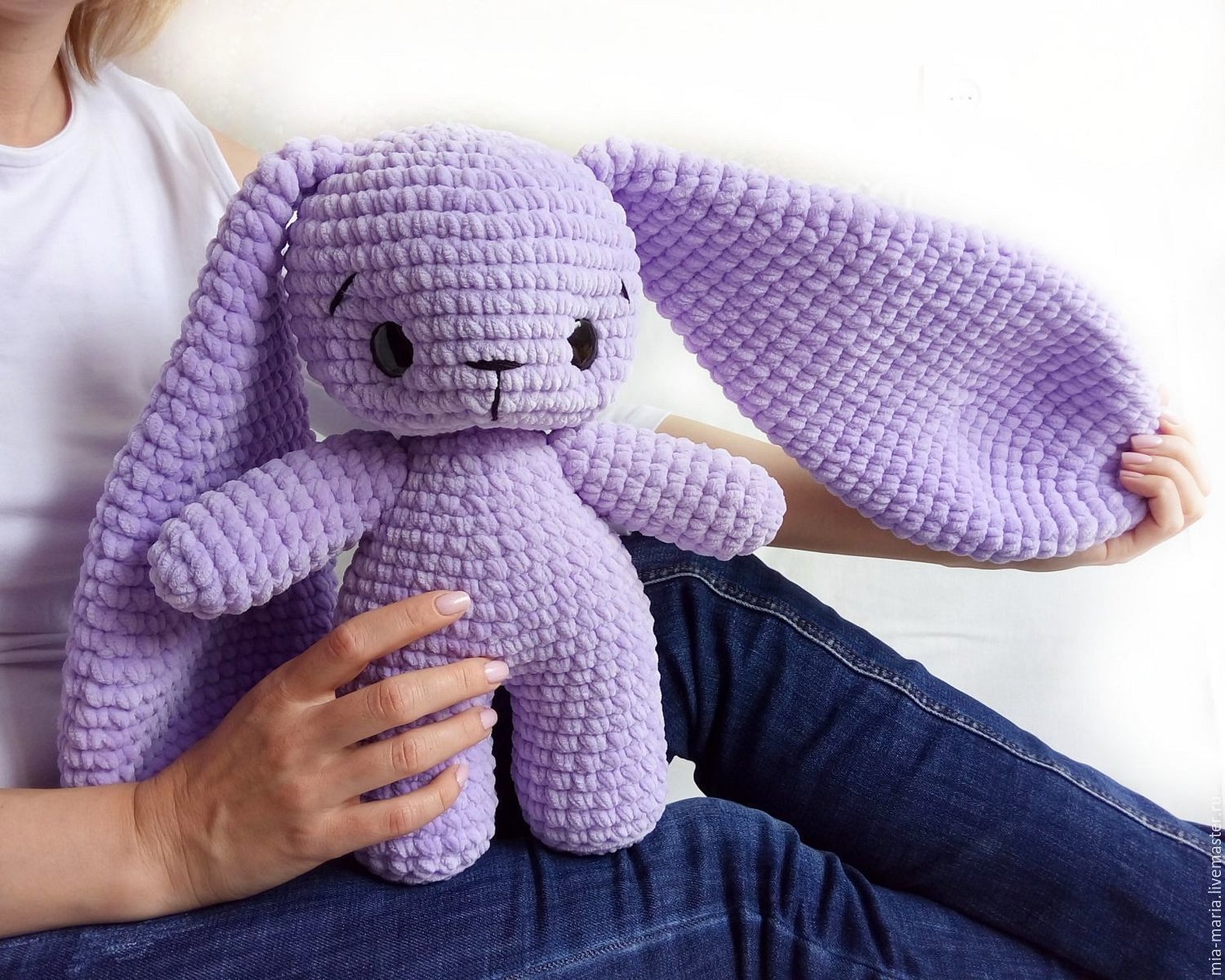
The crochet bunny is sewn together in sequence.
Knitting begins with choosing a pattern and step-by-step execution of each fragment of the future product. In the process of creativity, you can invent and add interesting details that will make the craft unique. Knitted bunnies are a relevant entertainment for a child, and for an adult lover of soft toys, this is a stylish element of decor.

